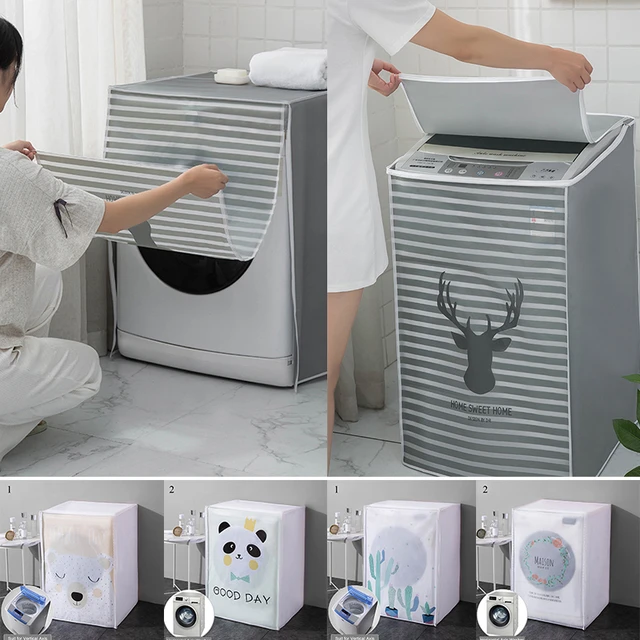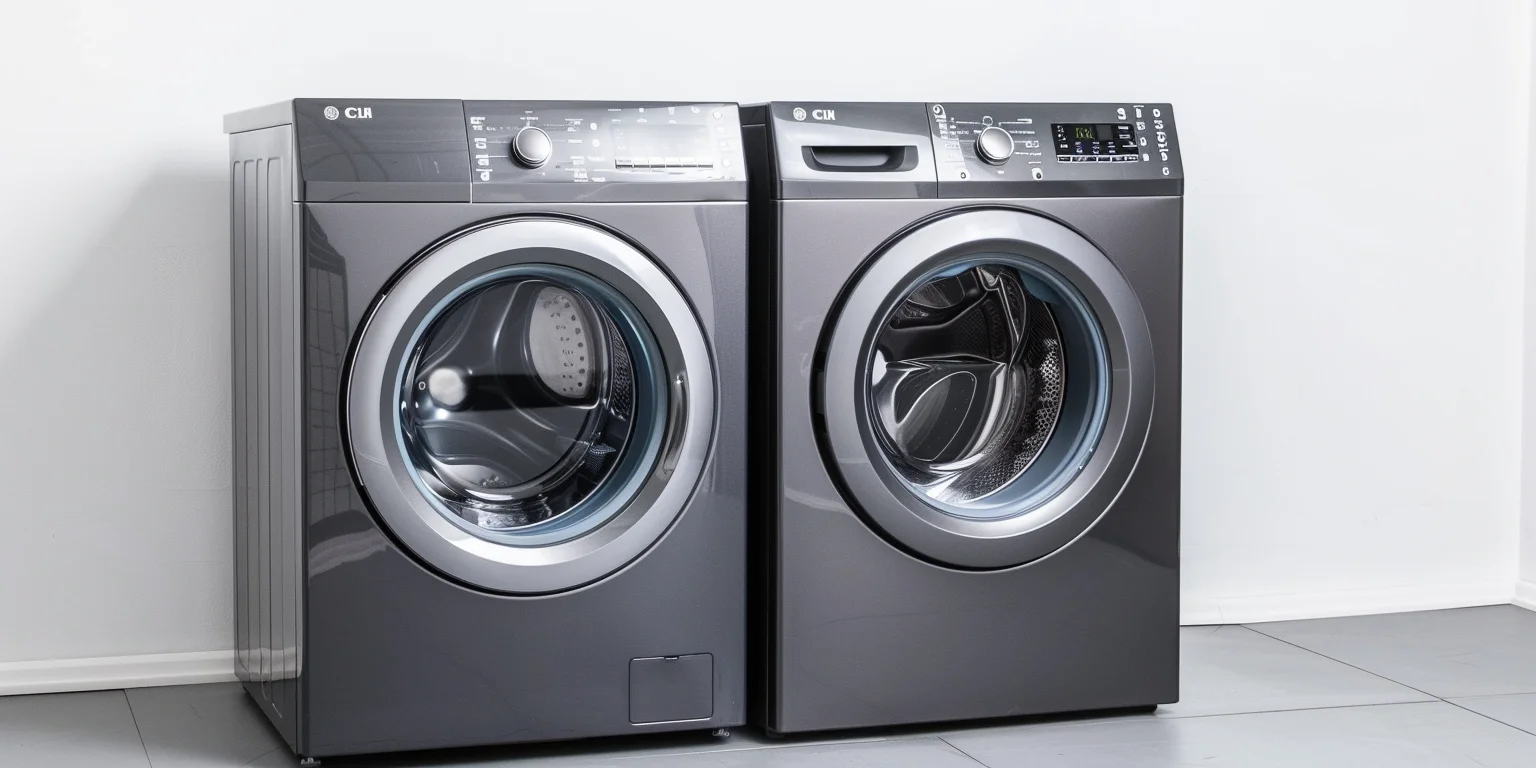Introduction: Understanding the Importance of Cleaning
A smelly washing machine can be a bothersome problem, as it can transfer unpleasant odors to your freshly laundered clothes. Cleaning your washing machine regularly not only eliminates odors but also helps maintain its performance and extend its lifespan. In this detailed guide, we provide step-by-step instructions and effective cleaning techniques to get rid of that stinky smell and keep your washing machine fresh and clean.

Eliminating Odors: Effective Cleaning Tips for a Smelly Washing Machine
Identifying the Source of the Odor:
Understanding Potential Culprits
a. Internal residue: Over time, detergent buildup, fabric softener residue, and lint can accumulate inside the washing machine, leading to unpleasant odors. Identifying internal residue as the source of the smell is the first step in effective cleaning.
b. Gasket or door seal: The rubber gasket or door seal in front-loading washing machines can trap moisture, dirt, and detergent residue, creating an ideal environment for mold and mildew growth. Inspect the gasket or door seal for any visible signs of mold or mildew, which often cause foul smells.
c. Drains and filters: The washing machine’s drains and filters can easily harbor debris, lint, and trapped water, leading to stagnant odors. It’s essential to clean these components regularly to prevent odor-causing buildup.
d. Hard-to-reach areas: Areas that are difficult to access, such as behind the drum or in the detergent dispenser, may accumulate dirt, grime, and residue. These hidden areas can contribute to unpleasant odors and require special attention during cleaning.

Cleaning the Interior of the Washing Machine:
Removing Residue
a. Run a hot water cycle: Begin by running an empty hot water cycle. Adjust the temperature setting to the highest heat level available. This helps loosen any built-up residue inside the machine.
b. Add vinegar: Once the hot water cycle starts, pause it after a few minutes and add two cups of distilled white vinegar to the water. Vinegar helps dissolve and remove detergent residue while neutralizing odors.
c. Resume the cycle: Allow the cycle to continue until completion. The vinegar and hot water will work together to clean the interior of the washing machine and eliminate odors.
d. Wipe down the drum and door: After the cycle finishes, open the door of the washing machine and use a soft cloth or sponge dampened with vinegar to wipe down the drum and door. Pay extra attention to the rubber gasket or door seal if you have a front-loading machine, as this area is often prone to mold and mildew growth.
Cleaning the Gasket or Door Seal:
Tackling Mold and Mildew
a. Inspect the gasket or door seal: Carefully examine the rubber gasket or door seal for signs of mold or mildew. Look for any visible stains, black spots, or musty odors indicating their presence.
b. Create a cleaning solution: In a bowl, mix equal parts of water and distilled white vinegar to create a cleaning solution. Vinegar’s natural acidity is effective in killing mold and mildew and neutralizing unwanted smells.
c. Clean the gasket or door seal: Dip a soft cloth or sponge in the cleaning solution and thoroughly wipe down the gasket or door seal. Pay close attention to the folds and crevices, as these areas tend to accumulate moisture and debris.
d. Dry the gasket or door seal: After cleaning, use a dry cloth or towel to thoroughly dry the gasket or door seal. Ensuring it is completely dry helps prevent mold and mildew from returning.ç

Cleaning Drains and Filters:
Clearing Buildup
a. Locate the drains and filters: Consult the user manual or manufacturer’s instructions to identify the location of drains and filters in your washing machine. These components vary depending on the model.
b. Remove debris from the drains: If your washing machine has accessible drain pipes or tubes, inspect them for any debris or clogs. Use a small brush or a pipe cleaner to remove any buildup and facilitate proper water flow.
c. Clean removable filters: Some washing machines have removable filters designed to catch lint and debris. Remove the filters, rinse them thoroughly under running water, and scrub gently with a brush to dislodge any trapped particles. Allow the filters to dry completely before reinstalling them.
d. Follow manufacturer’s instructions: Refer to the user manual or manufacturer’s guidelines to ensure you follow specific instructions for cleaning drains and filters that are unique to your washing machine.
Cleaning Hard-to-Reach Areas:
Tackling Hidden Grime
a. Detergent dispenser: Remove the detergent dispenser drawer from your washing machine. Soak it in warm soapy water, scrubbing it gently with a soft brush or toothbrush to remove residue and buildup. Rinse it thoroughly and allow it to dry before reinstalling.
b. Behind the drum: If possible, access the area behind the washing machine’s drum. Use a long, flexible brush or reach behind with a clean cloth dampened with vinegar to remove any dirt or grime that may have accumulated.
c. Clean the exterior: Wipe down the exterior surfaces of the washing machine using a damp cloth and mild cleaning solution. Pay attention to control panels, buttons, and knobs, ensuring they are free from grime and residue.
d. Regular maintenance: Perform routine maintenance, such as wiping down the drum and door after each use, to prevent the accumulation of dirt and residue in hard-to-reach areas and minimize the likelihood of unpleasant odors.

Dealing with Stubborn Odors:
Additional Cleaning Methods
a. Baking soda and vinegar: If the odors persist after the initial cleaning, another effective method is to create a paste using baking soda and water. Apply the paste to the interior of the drum and let it sit for 30 minutes. Then, pour a cup of vinegar into the detergent dispenser or directly into the drum. Run a hot water cycle to allow the baking soda and vinegar to eliminate stubborn odors.
b. Bleach solution: For severe odors caused by mold or mildew, a bleach solution can be used. Mix 1/4 cup of bleach with a gallon of water and pour the solution into the drum. Run a hot water cycle to kill any remaining mold or mildew and remove the unpleasant smell. Be sure to rinse the drum thoroughly afterward to remove any traces of bleach.
c. Citric acid: Citric acid is another effective agent for removing odors and buildup in the washing machine. Dissolve 2 tablespoons of citric acid in a gallon of hot water. Pour the solution into the detergent dispenser or directly into the drum. Run a hot water cycle to clean and deodorize the interior.
d. Run regular maintenance cycles: To prevent odors from recurring, incorporate regular maintenance cycles into your washing machine routine. This includes running an empty hot water cycle with a cup of vinegar or citric acid once a month to keep the interior clean and fresh.

Conclusion:
A Fresh and Odor-Free Washing Machine
Cleaning a smelly washing machine is a simple yet important process to ensure fresh and clean laundry. By identifying the source of the odor, cleaning the interior of the machine, addressing the gasket or door seal, clearing drains and filters, and tackling hard-to-reach areas, you can eliminate unpleasant smells and maintain the performance of your washing machine.
Regular cleaning and maintenance of your washing machine will not only keep odors at bay but also contribute to its longevity and efficiency. With these effective cleaning tips, you can enjoy fresh and odor-free laundry, confident that your washing machine is in optimal condition.

